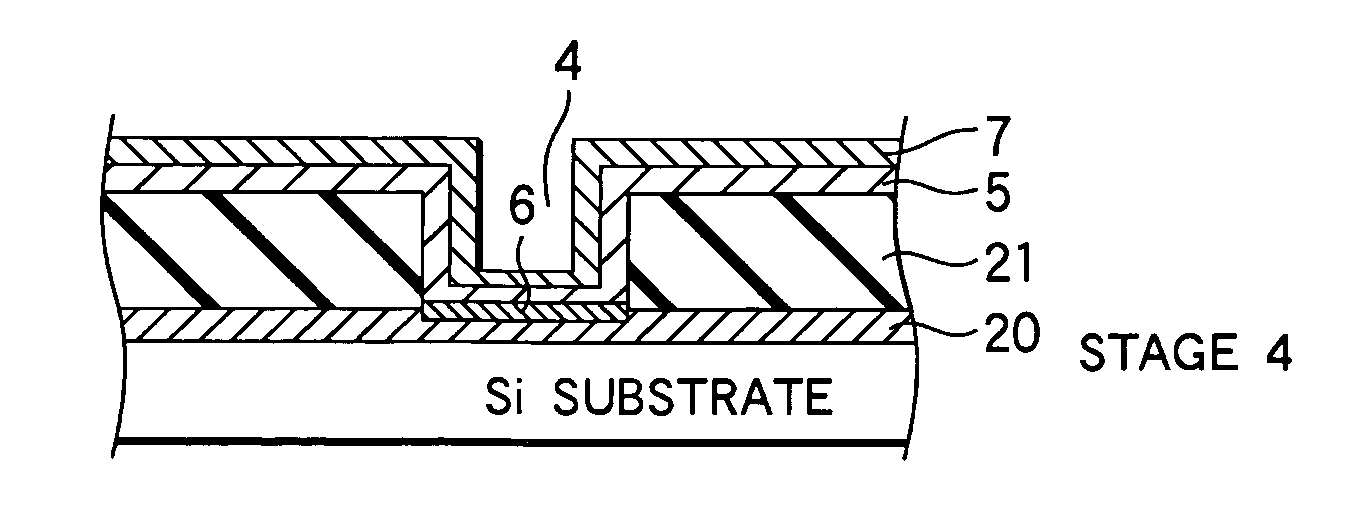Method for Forming Ti Film and Tin Film, Contact Structure, Computer Readable Storing Medium and Computer Program
- Summary
- Abstract
- Description
- Claims
- Application Information
AI Technical Summary
Benefits of technology
Problems solved by technology
Method used
Image
Examples
Embodiment Construction
[0046] Embodiments of the present invention will now be described with reference to the accompanying drawings.
[0047]FIGS. 1A to 1D are process views for explaining a method for forming a Ti film and a TiN film according to an embodiment of the present invention.
[0048] As shown in FIG. 1A, a metal silicide film, such as a nickel silicide (NiSi) film 2, is disposed on a semiconductor substrate, such as an Si substrate 1. An inter-level insulating film 3 is disposed on the nickel silicide film 2, and is provided with a contact hole 4 formed therein and reaching the nickel silicide film 2. In this state, at first, the surface of the nickel silicide film 2 is cleaned by removing natural oxide films, which are very thin, and so forth present thereon to obtain an active and clean surface (stage 1). This operation improves the reactivity between the nickel silicide and Ti.
[0049] The cleaning process used at this time can be selected from various methods, such as (1) sputter etching by us...
PUM
| Property | Measurement | Unit |
|---|---|---|
| Temperature | aaaaa | aaaaa |
| Thickness | aaaaa | aaaaa |
| Thickness | aaaaa | aaaaa |
Abstract
Description
Claims
Application Information
 Login to View More
Login to View More - R&D
- Intellectual Property
- Life Sciences
- Materials
- Tech Scout
- Unparalleled Data Quality
- Higher Quality Content
- 60% Fewer Hallucinations
Browse by: Latest US Patents, China's latest patents, Technical Efficacy Thesaurus, Application Domain, Technology Topic, Popular Technical Reports.
© 2025 PatSnap. All rights reserved.Legal|Privacy policy|Modern Slavery Act Transparency Statement|Sitemap|About US| Contact US: help@patsnap.com



